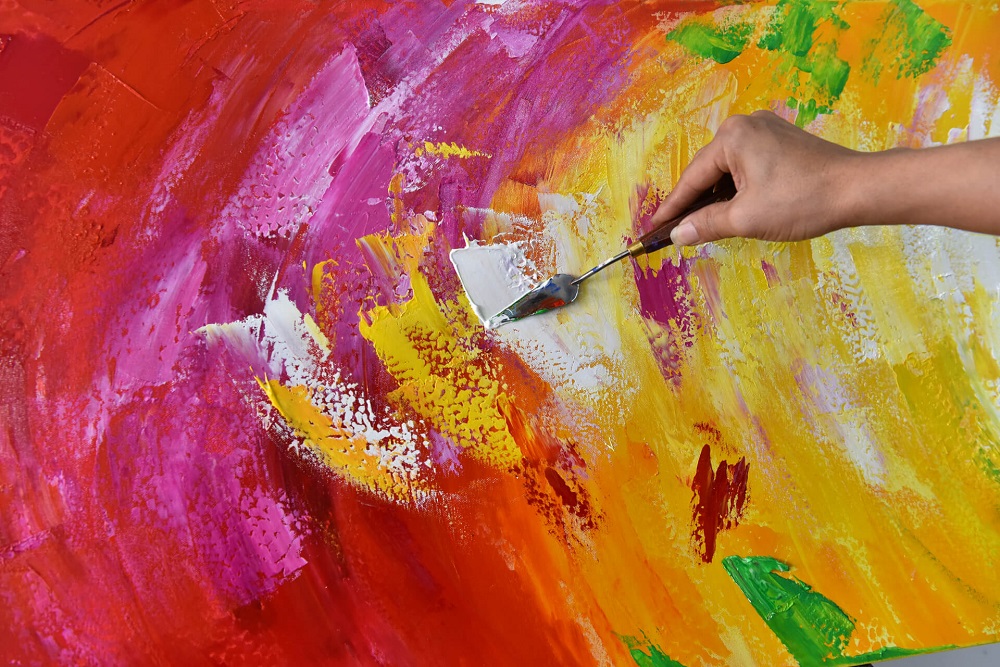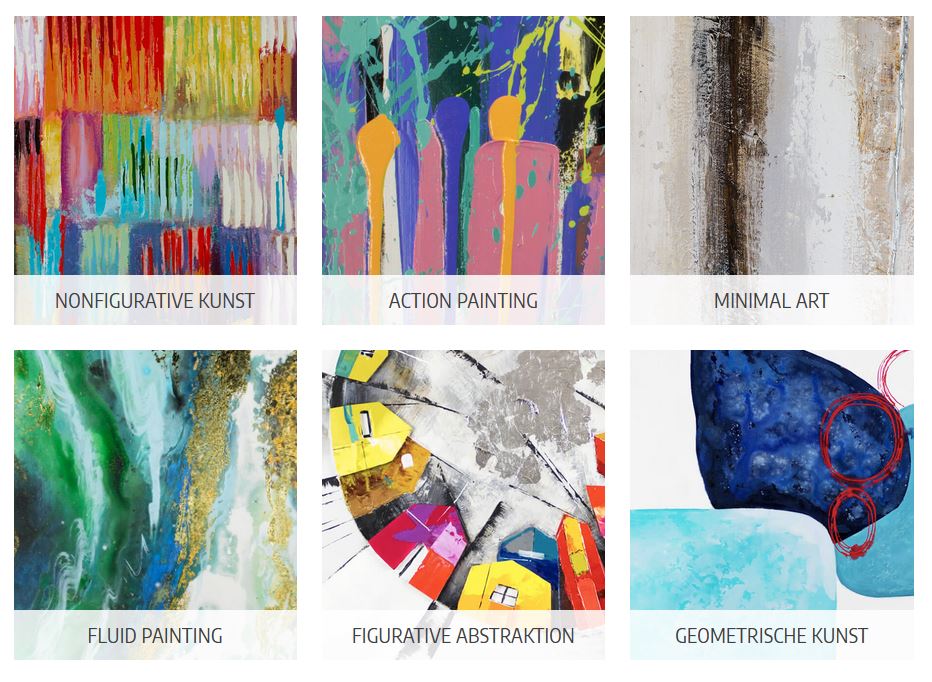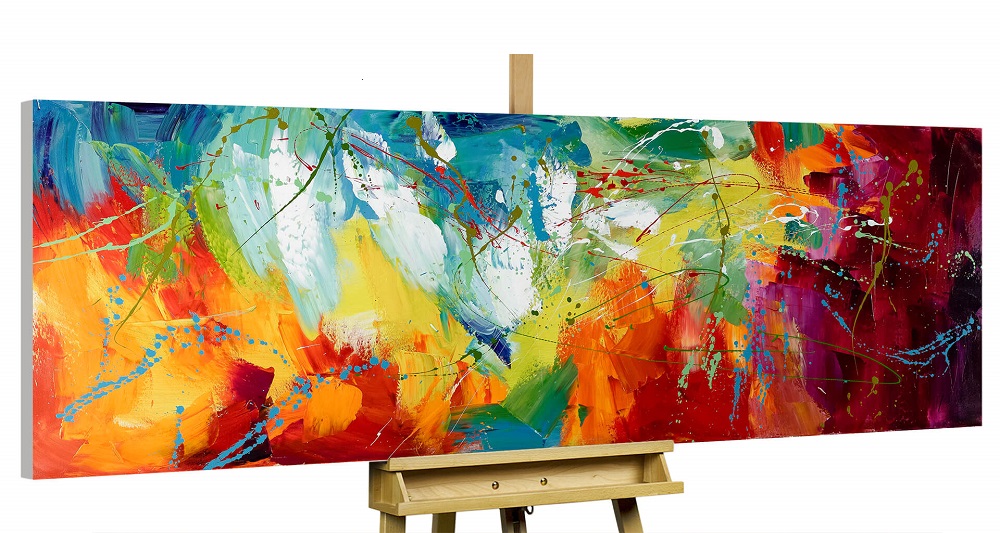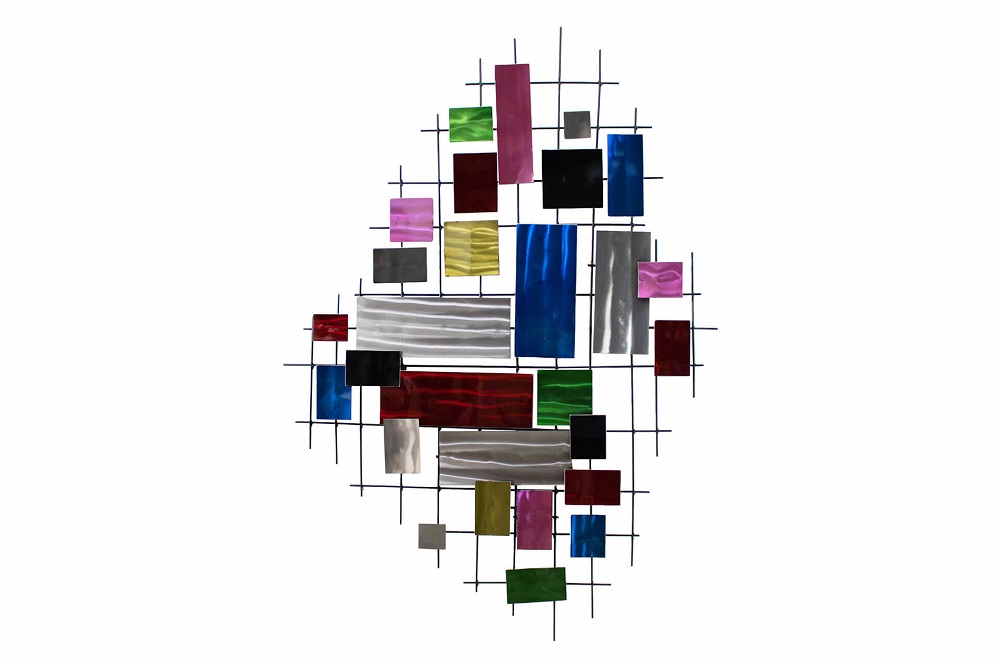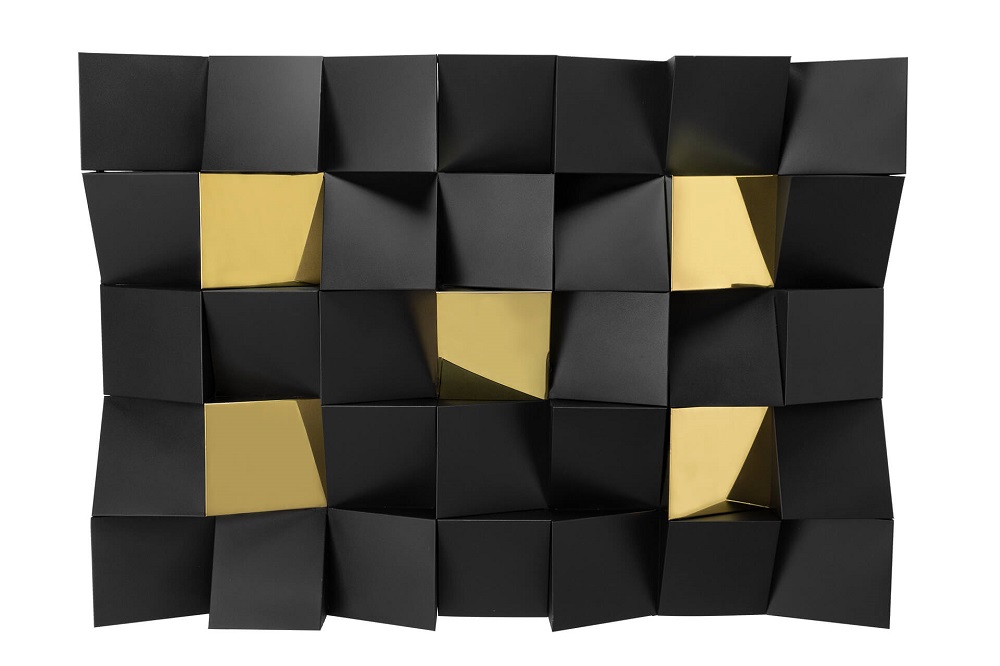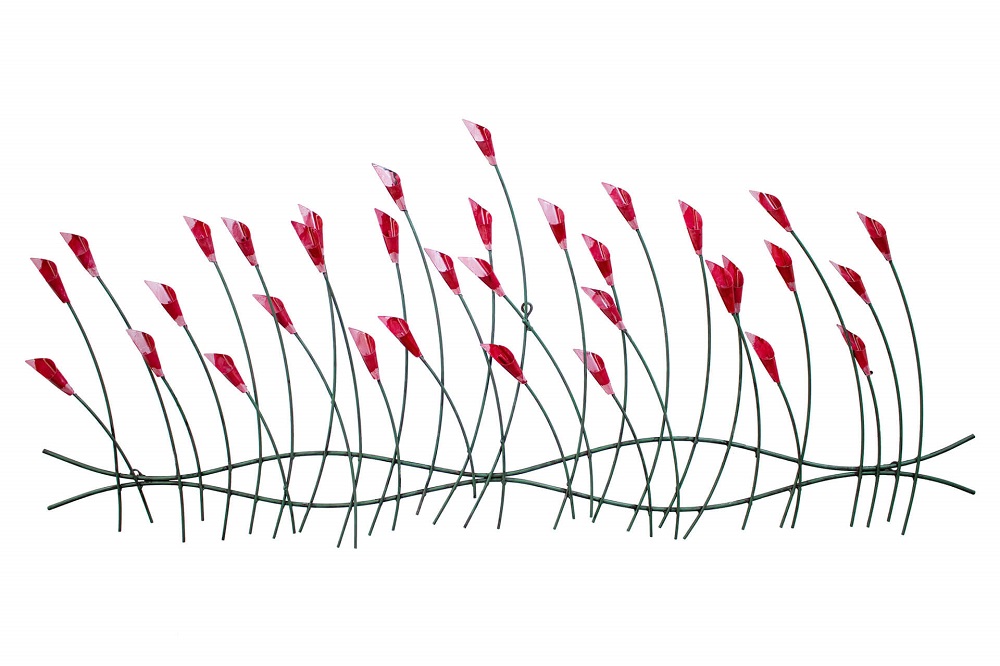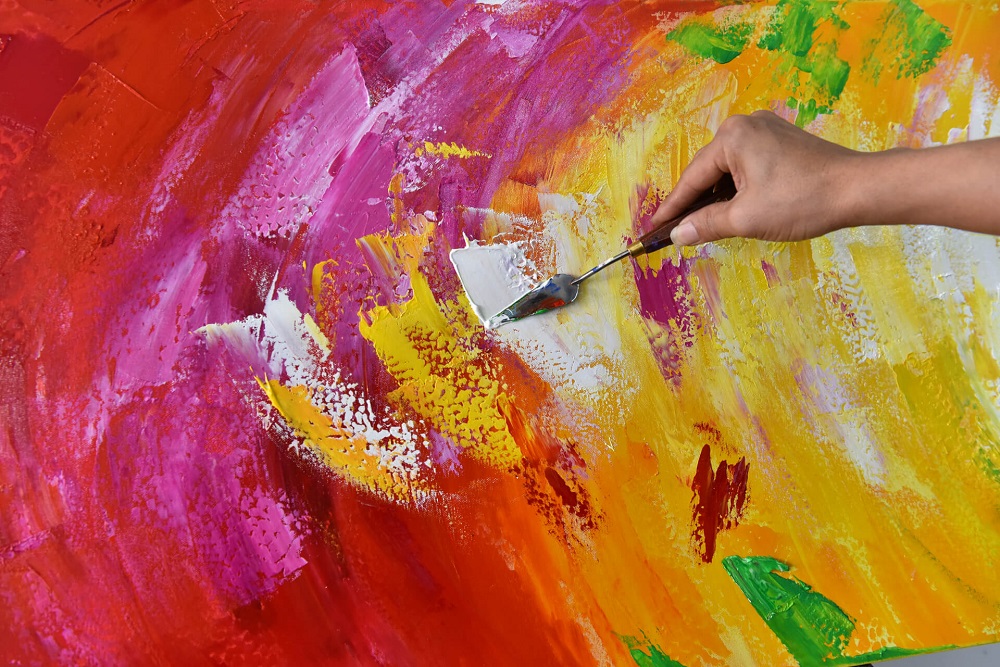
Beginner's guide: Painting abstract pictures
Would you like to develop your creativity with abstract painting? Read all the important information and tips here on how to learn abstract painting, what equipment you need and what techniques you can try. With our step-by-step instructions, you will soon be creating your own abstract artwork!
Abstract Painting with Acrylic: First Things First
- Abstract painting is detached from objects or figures. Artists express feelings and moods with shapes, colours and lines.
- Acrylic paints are ideal, especially for beginners who want to learn to paint abstractly. They are inexpensive, easy to use and versatile.
- You don’t need much to get started: a small selection of acrylic paints, a brush and a canvas are all you need to begin abstract painting.
- Don’t paint too cerebrally – “just try it out” is the motto in abstract painting. It could turn out well!
Good to know: Oil paints are less suitable for painting beginners: Basic knowledge of how to use oil paints and a certain amount of forethought are important. It is also less easy to correct mistakes with oil paints. For the beginning, we therefore recommend painting with acrylic paints. Read more about the difference between acrylic and oil paints.
Basics of abstract painting
Before really getting started, it doesn’t hurt to acquire a little basic knowledge about abstract painting.
What is abstract painting?
Abstract painting (from Latin abstrahere – to detach, separate) is “detached from the representational”. Abstract or non-representational painting refers to various art movements that do not depict real nature, figures or objects. Rather, abstract artists create compositions of colours, lines, contrasts and shapes.
What should you know if you want to start doing it yourself?
As a beginner, you should by no means approach painting too cerebrally. Let your imagination and creativity run free and try your hand. However, it won’t hurt if you first find out about colours, brushes and painting techniques.
Tip: Let yourself be inspired by a walk or by music and then put your mood on canvas.
What styles are there?
Abstract art is a collective term for many different modern art styles. Besides Cubism, Constructivism or Geometric Abstraction, Fluid Painting, Figurative Abstraction and Action Painting also belong to abstract painting.
Discover abstract art at KunstLoft:
By the way: In our magazine, we introduce you to famous abstract artists whose works may provide you with inspiration for your own art.
Basic equipment: What you need for your acrylic painting
To get started with abstract painting, you don’t need that much to begin with:
- Acrylic paints (e.g. primary colour set of white, black, magenta/red, cyan/blue and yellow)
- Brushes in different thicknesses (possibly also other painting tools such as spatula or sponge)
- Painting surface – a small canvas is best, but you can also paint wonderfully with acrylic on paper or cardboard.
- Old shirt/painting smock
Optionally, you can also get the following in the artists’ supplies:
- A painting plate to mix the colours (alternatively, an old plate or a wooden board).
- a primer (such as artist’s primer or acrylic binder) if you want to prime the canvas (recommended)
By the way: You don’t need an easel for abstract acrylic painting. You simply lay your canvas flat on a table.

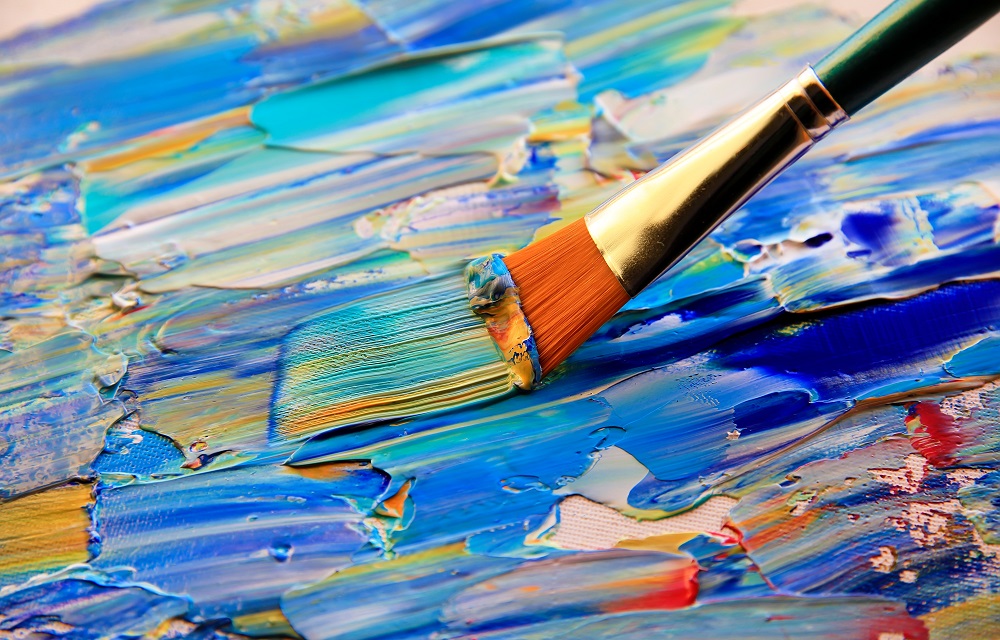

Abstract painting: 3 techniques with acrylics
When you learn to paint abstractly, you will quickly realise how many different ways there are to put colour on canvas and create special effects. We present three examples that are well suited for beginners in abstract acrylic painting.
1. Glaze technique
In this painting technique, so-called glazes, i.e. thin, semi-transparent layers of paint, are applied on top of each other on the painting surface. The glaze technique is known from watercolour painting, but great effects can also be achieved with acrylic paints. It is important to dilute the colours well with water before glazing, as acrylic paints are generally very thick and opaque. The bottom layer of paint should already be dry when you apply the next layer of paint on top of it.
In this video by the artist Gerda Lipski you can learn more about the glazing technique and how you can paint an abstract picture step by step:
2. Wet-on-wet technique
With this technique, you proceed similarly to the glazing technique, i.e.. You apply several layers of paint one after the other. The difference is that you do not wait until the bottom layer is dry. In other words, you paint “wet on wet”.
Tip: To avoid getting stressed while painting, drying retarder can be useful to keep the paint moist longer.
3. Spatula or sponge technique
As the name suggests, you work with a sponge or palette knife instead of a brush.
With the spatula technique, the thick acrylic paints can be applied wonderfully to the painting surface with the spatula or painting knife. This creates more depth, you can bring plastic structures onto the canvas and use light effects – by the way, a famous artist who worked with the palette knife technique was Vincent van Gogh!
In this video, artist Gerda Lipski shows you how the palette knife technique works:
Also try the sponge technique: Dab the acrylic paint onto the painting surface with a sponge. In this way you create lively and at the same time discreet patterns. You can also combine the sponge technique with other painting techniques: For example, dab a background with the sponge and paint over it with a brush or use the sponge to create decorative accents on areas of colour.
Watch this video by KreativstattAndrea to see an example of how you can create an abstract painting with the sponge:
Let's go: Painting abstract pictures as a beginner
Enough theory! Now you can finally start painting. Read how to paint your first abstract picture step by step.
Preparation
Before you put paint on the canvas, first prepare everything you need:
- Grab an old shirt or a painting smock – you’re bound to get a splash or two of paint in the heat of the moment.
- Also prepare your materials: the painting surface (preferably a small canvas), brushes (alternatively or additionally a spatula or sponge) and acrylic paints. You can mix the colours later on a painting plate (an old plate or wooden board will do in the beginning). If you want to prime the canvas, you will also need primer, such as artist’s primer or acrylic binder.
- It is best to lay the canvas flat on a table. Cover it with newspaper as a precaution.
Painting your first abstract painting
Then you can start painting and create your first work of art in just a few steps.
Step 1: Prime the canvas (optional)
Priming creates the basis for your painting. It seals the canvas so that it does not absorb the paint too much. Great side effect – your painting becomes more durable. When painting with acrylics, priming is not absolutely necessary, but you can use it to create exciting effects: for example, by priming your painting base with a certain colour, such as blue or black, or by creating a rough surface texture through priming.
Step 2: Apply the paint
Once your painting surface is prepared, you can start applying the paint. Whether you work with a brush, a painting knife or a sponge – let your creativity run free! The most important thing is that you enjoy abstract acrylic painting.
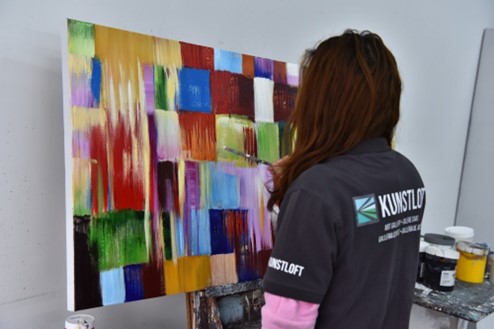
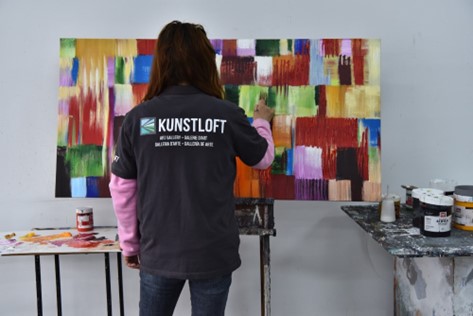
Step 3: Let the colours dry and enjoy
After the work is done, let the paint dry for a moment. With acrylic paints, this is relatively quick. Take a short break, go outside – and look at your work later with fresh eyes. You can be proud of yourself – you have painted your first abstract picture!
Tips for abstract painting
In abstract painting, you do not have a concrete, realistic subject in mind. Rather, it is about painting “from the inside out“: Pay attention to your feelings and perceptions and give them expression when painting.
It makes sense to consider which colours you want to use before painting. Do you feel like painting a particularly colourful picture or do you prefer to keep it tone-in-tone?
As a painting beginner, it won’t hurt if you study colour theory and learn more about the meaning of primary colours, secondary colours and tertiary colours. Which colours go particularly well together and which do not? Because colour composition plays a special role, especially in abstract paintings. You can find more information on colour theory at daskreativeuniversum.de, for example.
Motifs for beginners
While the representational motif plays a major role in realistic painting, the inspiration for abstract painting comes from the artist’s world of thought. You can still help your inspiration with real things.
Take a walk or wander through your own garden and let yourself be inspired by the colours and shapes of nature. A group of trees, the spiral of a snail shell, the colourful facades of the neighbouring houses, a reflection in the pond – all of these can provide valuable inspiration for your art. The more you train your eye for these details, the more your ideas will bubble up!
Or go to the museum to be inspired by the works of other artists. Of course, you can also get inspiration in the KunstLoft shop – we offer high-quality, hand-painted pictures where you can feel every single brushstroke:
FAQ: Things to know about abstract painting with acrylics
Finally, we collect some typical questions that (not only) beginners ask about abstract painting.
How do I start an abstract painting?
Start your abstract painting by applying a primer to the painting surface (the canvas). Then you can start to apply the colours. It is best to have thought in advance about what you want to depict and what colour scheme you want to work with.
What do I need for abstract acrylic painting?
As a beginner, you don’t need much at all for abstract painting with acrylics: a canvas (optionally also paper or cardboard), a brush (possibly also a spatula or sponge) and a selection of acrylic colours – then you can get started.
How do I get depth in an abstract painting?
There are many different ways to add depth to an abstract painting. For example, overlapping shapes create more depth. The palette knife technique can also be used to create depth, as it allows you to place coarser structures on the canvas that contrast with the smooth background. The arrangement of colours (warm versus cold colours) or the contrast between highly opaque and diluted colours can also add visual depth to your painting.
Which colours for abstract art?
Acrylic paints are particularly suitable for beginners learning to paint abstractly. They are easy to use, mix well and create intense paintings in bright colours.
Abstract art for your walls
Put on your painting smock and let’s go! You now know how to start abstract painting without any problems, even as a beginner. Don’t think too much about it, but try out according to your mood. You will soon be able to decorate your home with your own works.
Otherwise, you can also find abstract murals in a variety of styles at KunstLoft – take a look around our shop! Abstract sculptures offer an exciting alternative in 3D – every viewer will discover something different in them. Not only at home, but also in the office, in the doctor’s practice or in the reception area, our handmade wall sculptures make an impression.
For more art knowledge and inspiration, also read the following magazine articles:
- Office decorating: Furnishing ideas and tips
- Wallpaper properly
- 7 Famous Abstract Artists You Should Know
Do you love DIY? Then discover a variety of ways to make your own picture frames.
Image credits: Image 3: encierro / Adobe Stock, denys_kuvaiev / Adobe Stock; all other images: © KunstLoft

